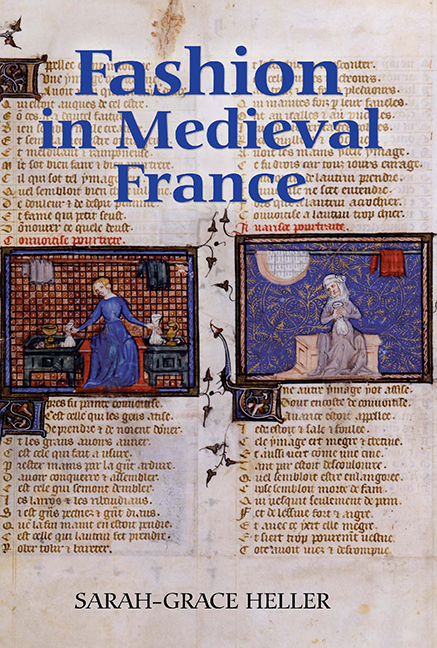Book contents
6 - The Development of Shopping
Published online by Cambridge University Press: 13 April 2017
Summary
Lors l'enmainne en sa cambre droit.
Ore a tou cou que desiroit:
La pora veïr ses juiaus
Et eslire tous les plus biaus.
Then she leads him straight into her chambers.
Now she has all she desired:
there she will be able to see his jewels,
and select all the most handsome ones.
Le Roman du Castelain de Couci, lines 6648–51.In a fashion system, economic and social structures must be in place to permit and promote the frequent acquisition of new things. But fashion systems function both at the macro-economic and personal levels. How does a system for acquiring new things come about in a nascent fashion system? French vernacular literature sets up many situations in which new clothes are admired or received. But crucial to a fashion system is an economy where it is possible for more than just a narrow elite to consume new things expressive of personal tastes on a regular basis. How and where did one get new clothes in the thirteenth century, when desire for them is in evidence? Although characters rarely “go shopping” in medieval French romances, the acquisition of new garments by gift is a common element from the earliest vernacular works, as discussed in the previous chapter. When new things are required characters often “have them made” (fet faire), an activity expressed using a causative construction that suggests we should not imagine “window shopping” but rather a process of ordering garments through various artisans. The used clothing system (freperie) provided valuable services to patrons of all ranks, converting clothing into cash as well as supplying “ready-made” garments. This chapter will compare anecdotes of acquisition in vernacular literature with documents such as tax and métier (craft organization) records to show some of the facets of medieval “shopping.” The former provide representations of various types of consumers, while the latter can offer an impression of the other side of shopping, that of the purveyors.
The marketplace: who shops, and how
The accepted view of medieval and early modern fashion holds that trends were initiated by the highest aristocracy, and then adopted gradually through the social ranks in descending order. Burghers imitated the courtly nobility, and eventually urban trends penetrated the countryside.
- Type
- Chapter
- Information
- Fashion in Medieval France , pp. 148 - 171Publisher: Boydell & BrewerPrint publication year: 2007



